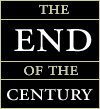 |
|
| | Wednesday, December 22 | ||||||||||
| 10. 1973: Designated hitter Love it or hate it, 27 years after the American League introduced the designated hitter in 1973, it remains a controversial topic. The AL approved a two-year experiment of the rule because, at the time, its attendance was lagging behind the National League. The new rule increased offense and thus brought more fans to the ballpark as intended. 9. 1965: Luxury boxes Why does every team want a new place to play these days? Better sight lines? Bigger clubhouses? More restrooms? No. They want the extra income that luxury boxes bring in. The more, the better. We can all thank Judge Roy Hofheinz, owner of the Houston Astros, who spearheaded the construction of the Astrodome, which opened in 1965. He was the first to add luxury suites to his stadium.
When Bill Parcells and the New York Giants drafted Taylor from North Carolina, they knew they had a special player. But when the Giants allowed their speedy rookie linebacker to rush the quarterback, they had perhaps football's greatest pass rusher ever. Taylor's ability to pressure the quarterback essentially created a new position and every team soon wanted a fast, pass-rushing linebacker like Taylor. 7. 1979: Bruce Sutter, the first closer While the use of relief pitchers has been a gradual evolution throughout the century, one can point to Bruce Sutter as the first modern "closer." Chicago Cubs manager Herman Franks had noticed that in 1977 and 1978 Sutter tired in the second half of the season, so he began using Sutter only when the Cubs had a lead. Sutter saved 37 games in 1979 and won the NL Cy Young Award. Other managers began using their best relievers in a similar manner. Tony La Russa later went a step further with Dennis Eckersley in 1988, using him with a lead, but almost exclusively in the ninth inning. 6. 1966: Bobby Orr: Offensive defenseman Before Bobby Orr joined the Boston Bruins, NHL defensemen were not a regular part of the offensive attack. But Orr's skating and puck-handling skills were so amazing, he changed the position. Rather than passing the puck to the forwards, Orr would rush up the ice and initiate the attack himself. In 1970, the became the first defenseman to lead the league in scoring. His style of play became standard strategy. 5. 3-point shot in basketball First introduced by the ABA, the NBA adopted the 3-point shot for the 1979-1980 season. That first season, Brian Taylor of the Clippers led the league with 90 3-pointers and the NBA champion Lakers made just 20 all season. In 1997-98, 28 players made more than 100 3-pointers and the Rockets fired up 1,670 attempts from beyond the arc. College basketball added the 3-pointer in 1986. More than anything, the rule allowed for more dramatic finishes and great comebacks. 4. 1960s: Curved hockey stick Stan Mikita and Bobby Hull of the Chicago Blackhawks are credited with popularizing the curved stick in the 1960s. Hull, who ordered his custom-built sticks from the Northland Ski Manufacturing Company of St. Paul, Minn., discovered the curved blade allowed him to pull in the puck and shoot in one motion, making his slapshot even more lethal. By 1967, the curved blade was in wide-use, although the NHL eventually had to put a half-inch limit on the allowable curvature. This also compelled every goalie in hockey to wear a mask.
The natural grass used in the first year of the Astrodome didn't grow under the painted panels of the roof. Something new was needed -- a grass carpet! Thus, AstroTurf was born, changing the way games were played. Speed became more primary, in baseball and football. Many say injuries became more prevalent. However, schools and teams could maintain fields easier and cheaper than with natural grass. While more teams are going back to natural grass, AstroTurf is here to stay. 2. 1940: Bears perfect the T-formation The 1940 NFL championship game proved to be the biggest blowout in NFL history, as the Bears demolished the Redskins 73-0. How did they do it? Coach George Halas' Bears unveiled the modern T-formation in full force, shocking a team they had lost to 7-3 just three weeks before. Stanford coach Clark Shaughnessy, the innovator of the formation, helped the Bears fine-tune the formation, which Chicago had tinkered with for several years. By the end of the decade, nearly every team -- pro and college -- would be running the T. 1. 1976: Free agency Before Andy Messersmith and Dave McNally became baseball's first free agents, players had one choice: sign with the team that owned them or not play at all. But Messersmith and McNally discovered a loophole in the standard player contract, played out their existing contracts and became free agents. Eventually, all the major sports would have a form of free agency. Sports would never be the same. | ALSO SEE Garber: The tragic carpet Message Board  | ||||||||||
